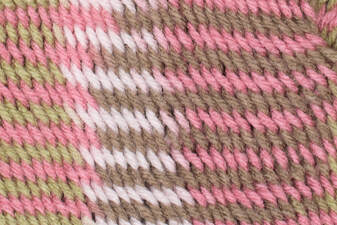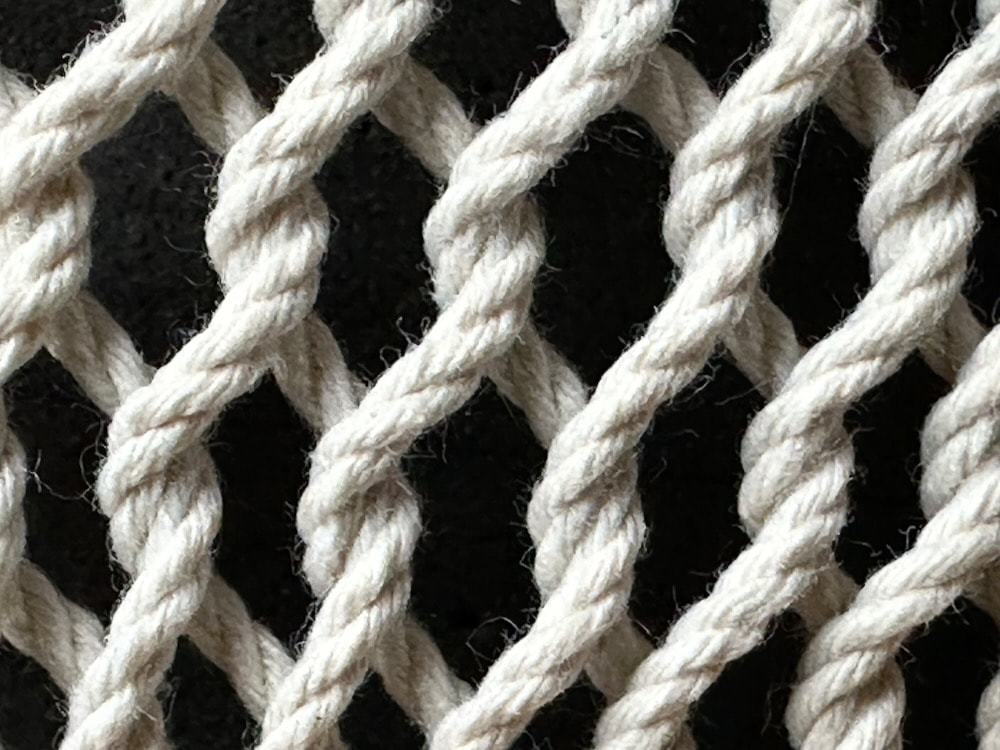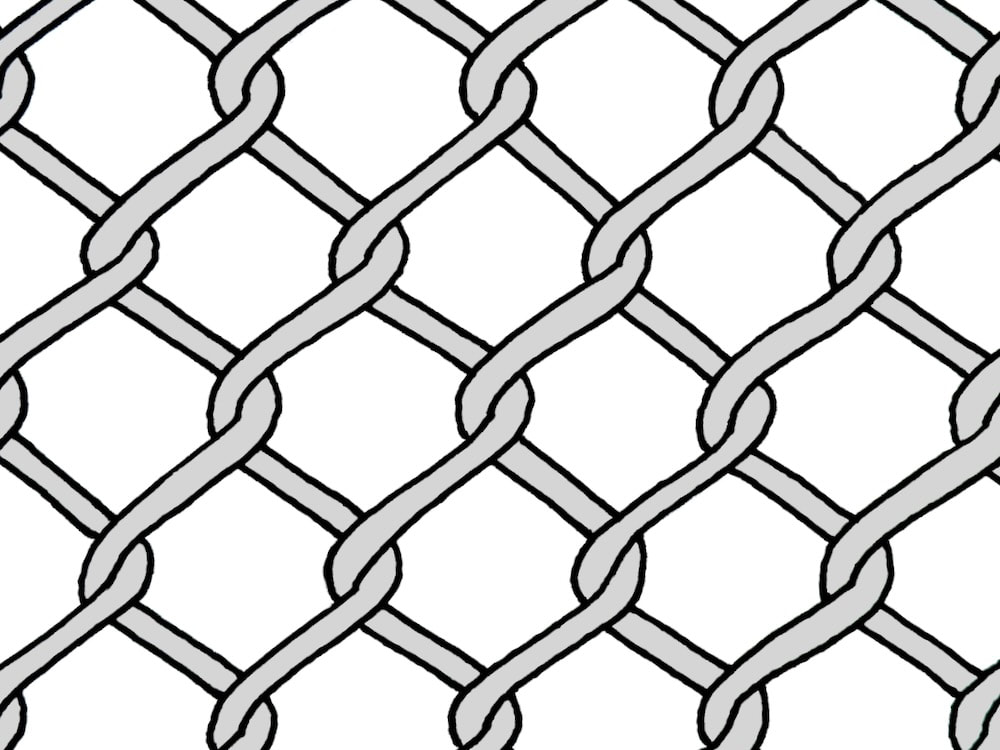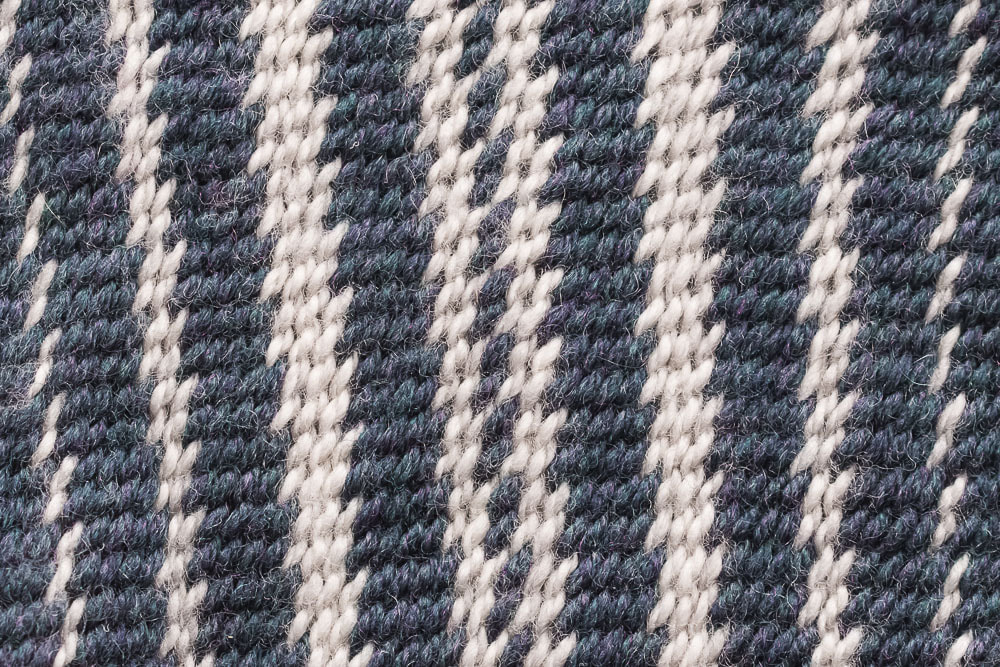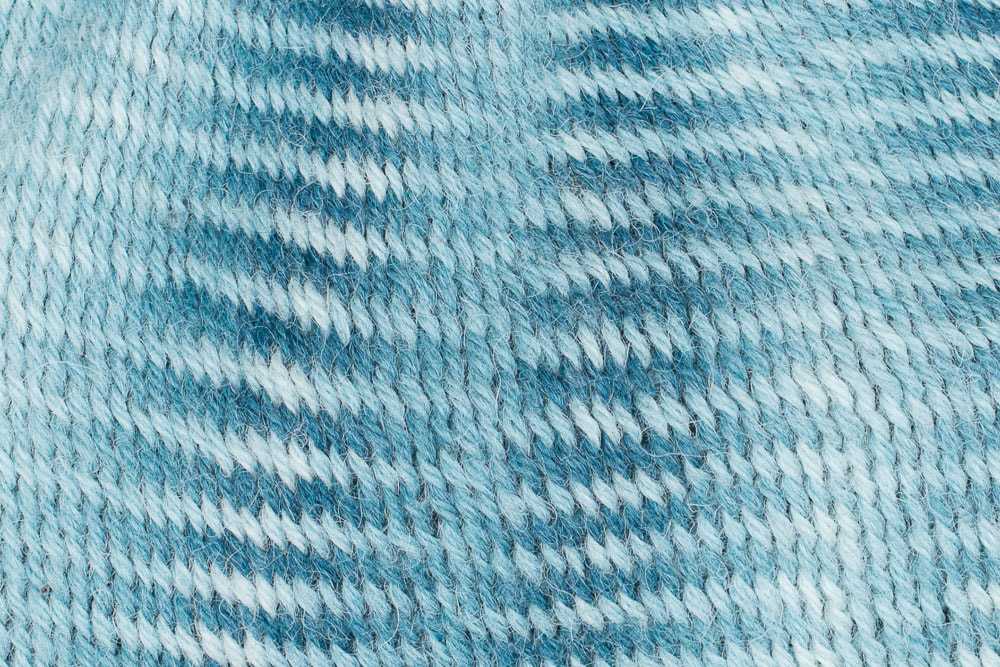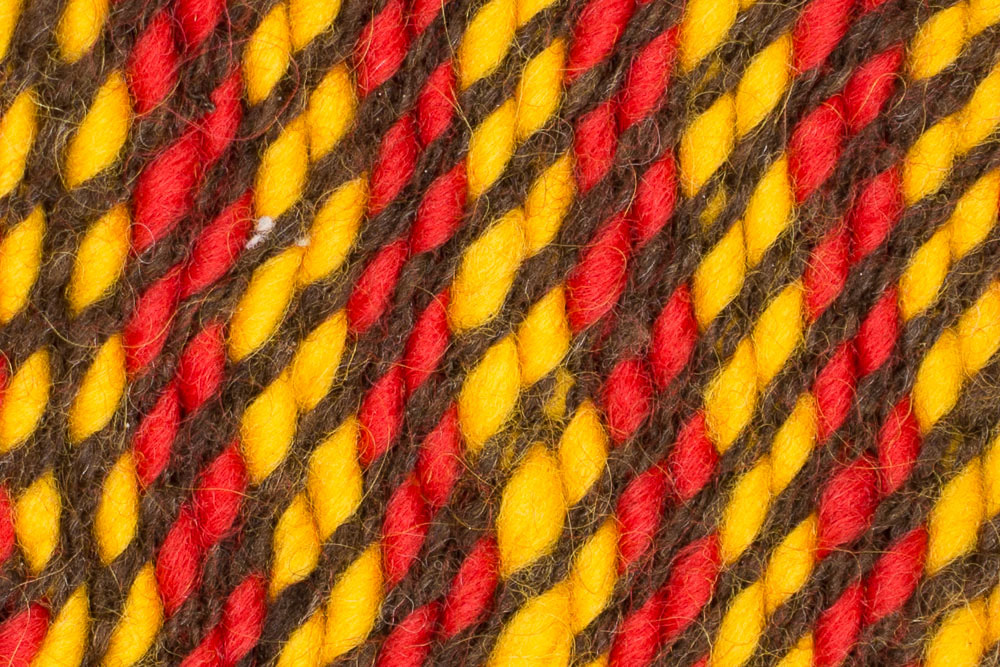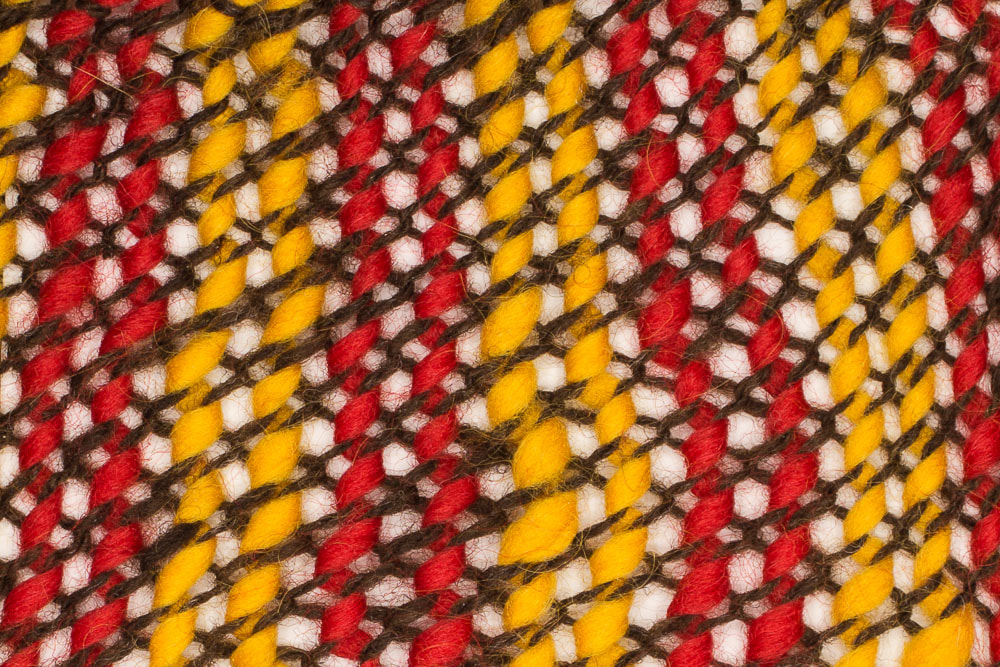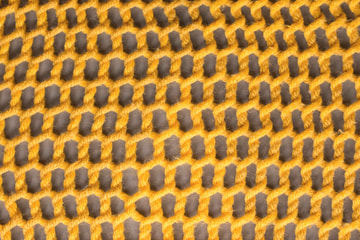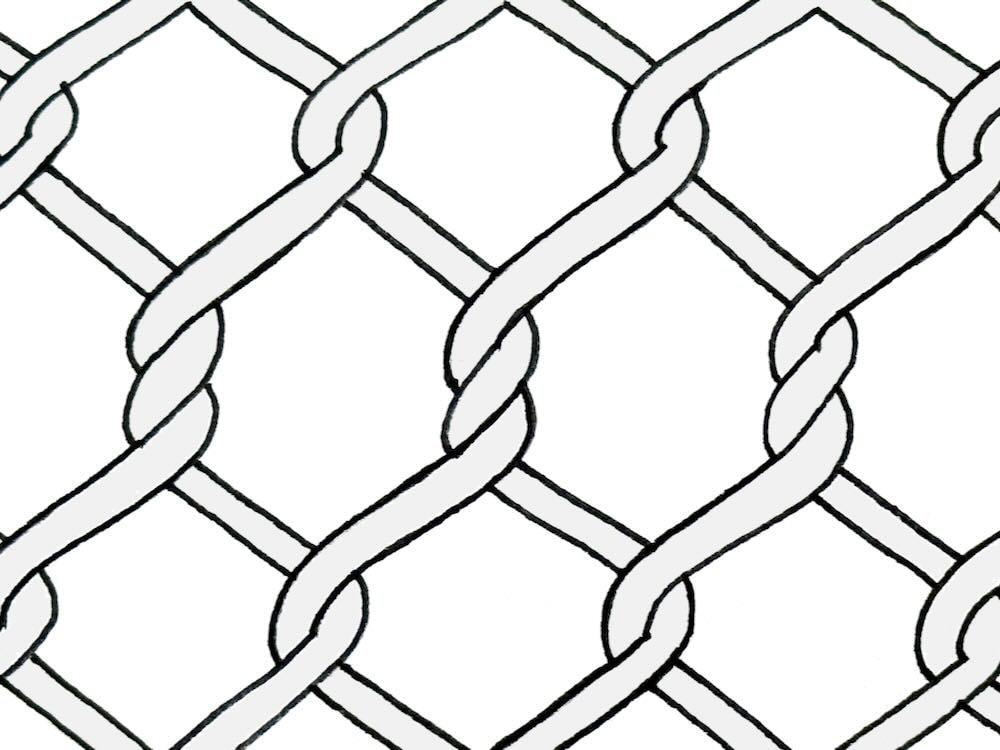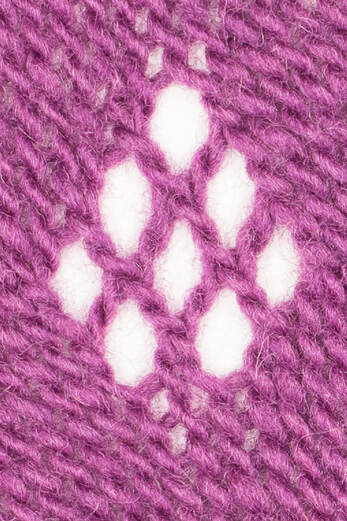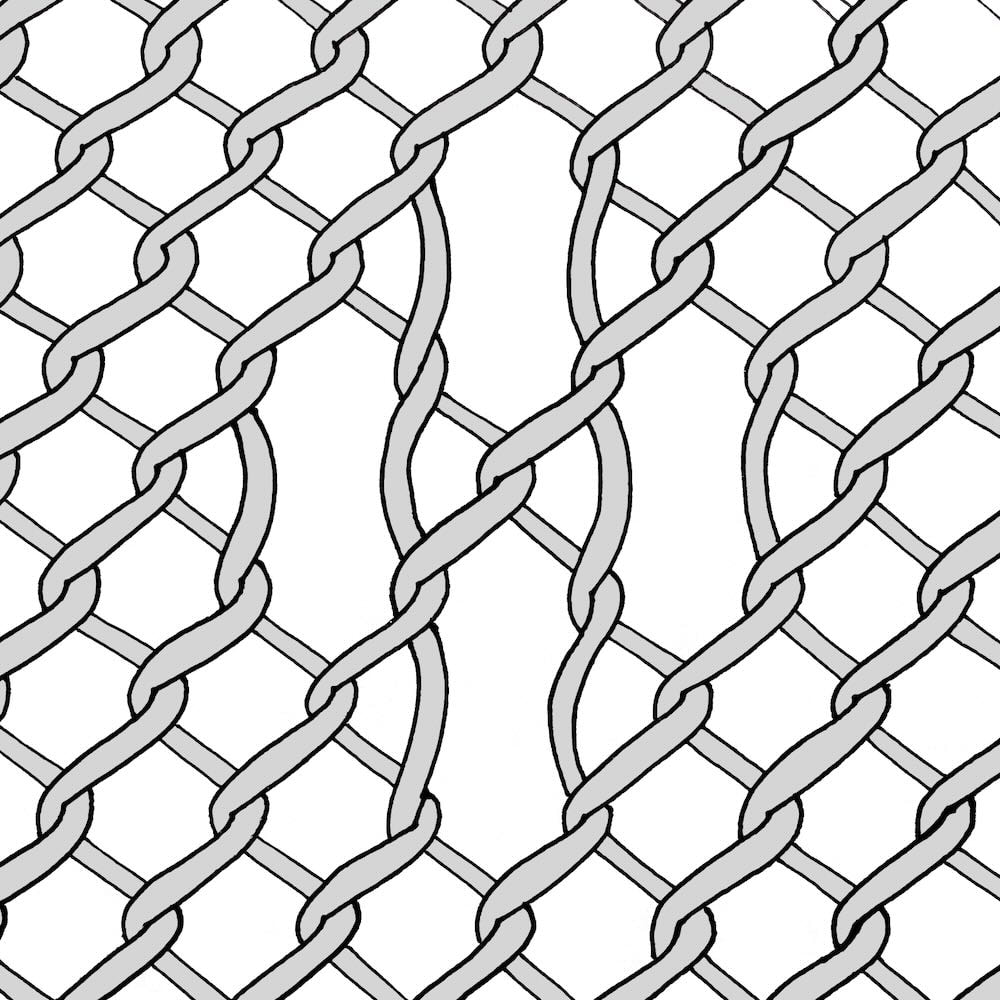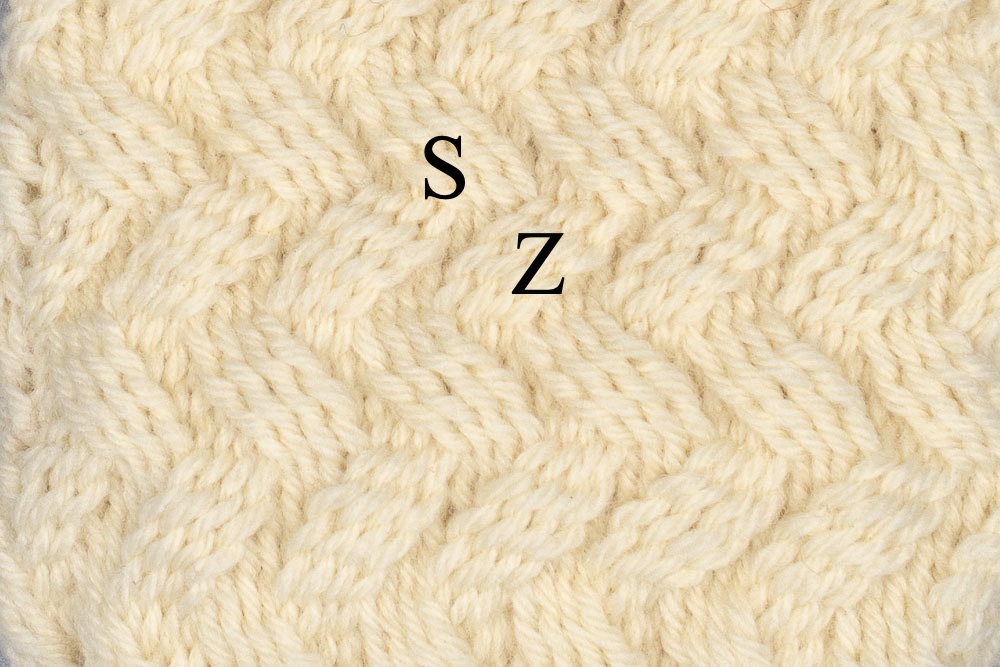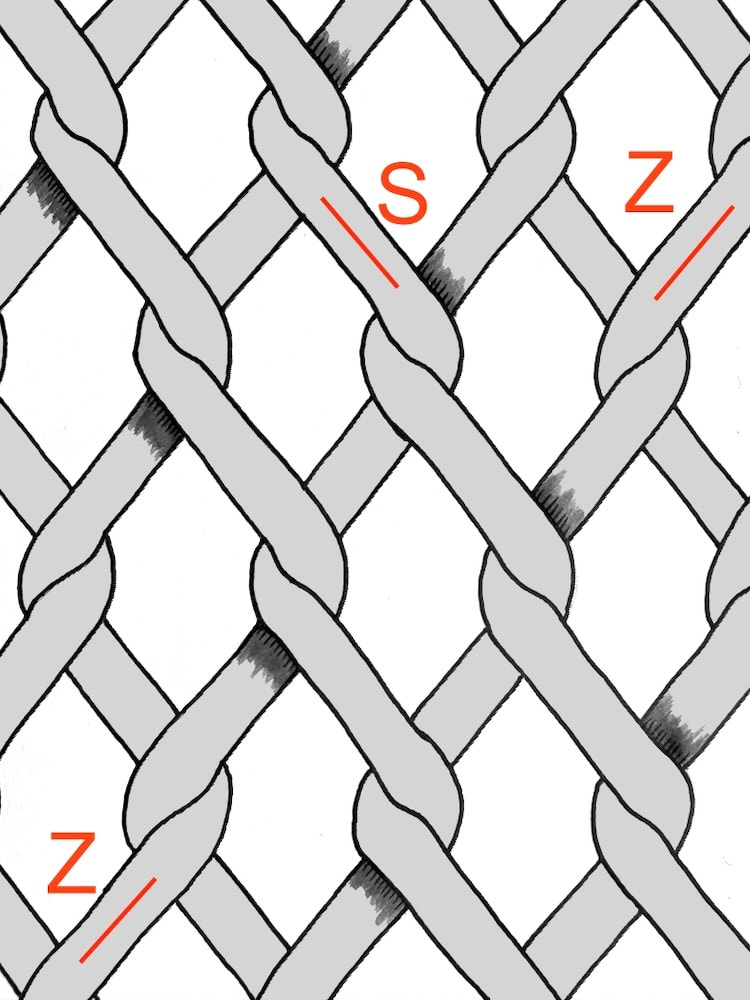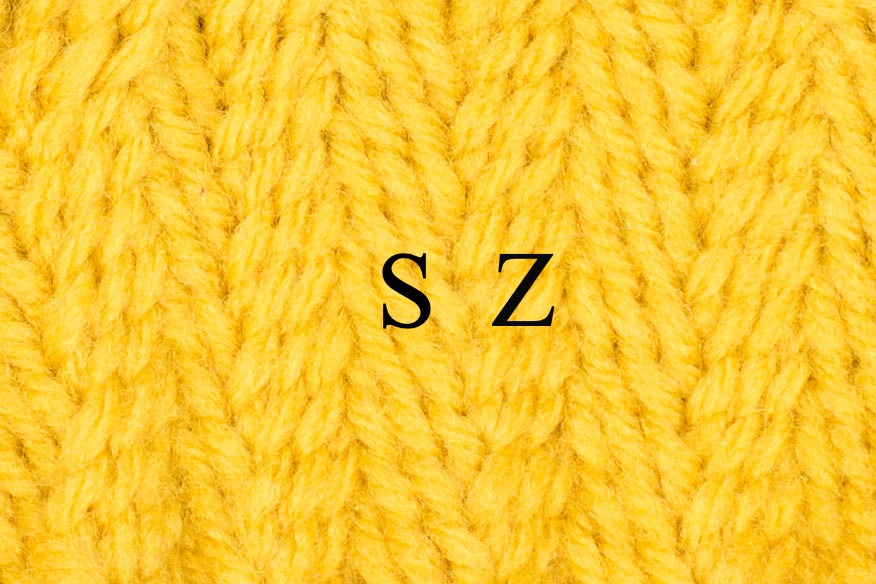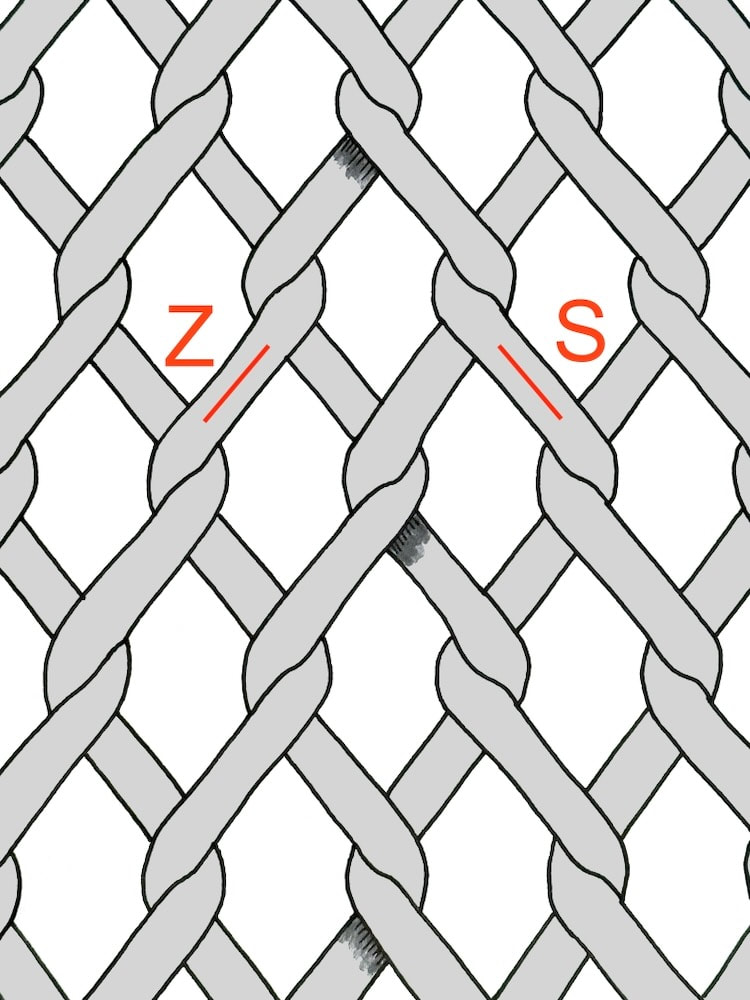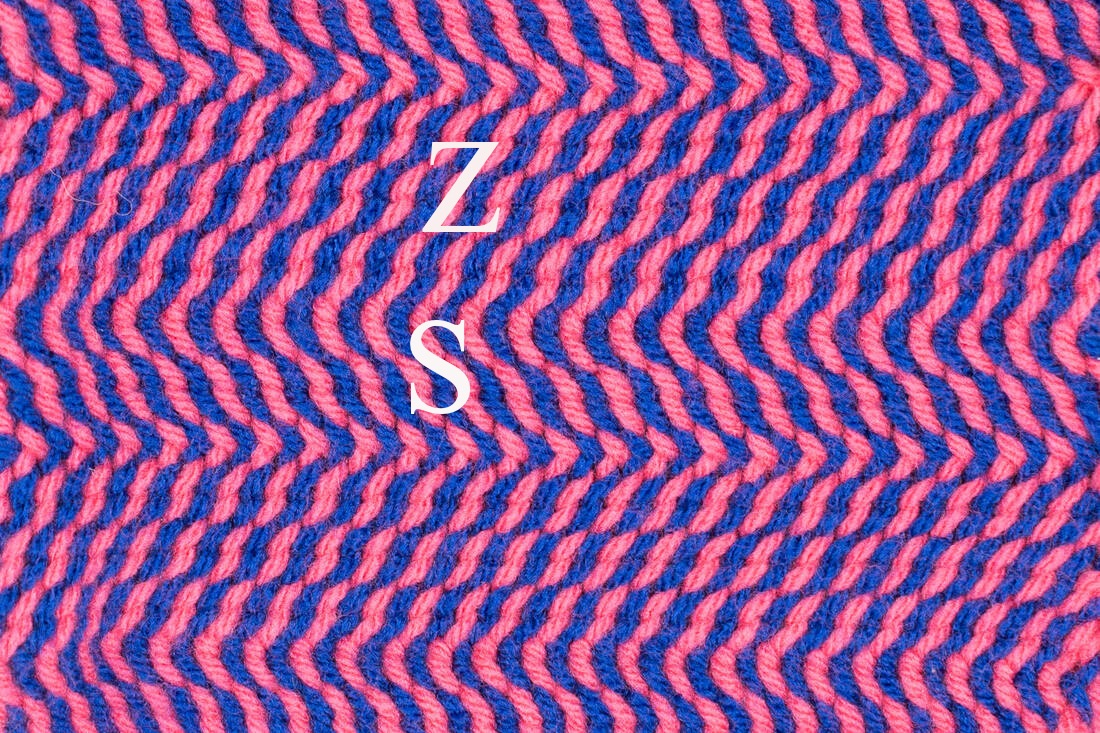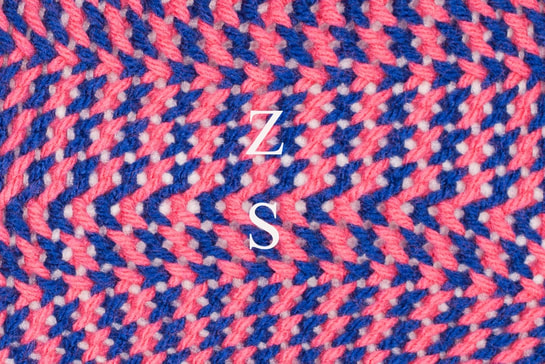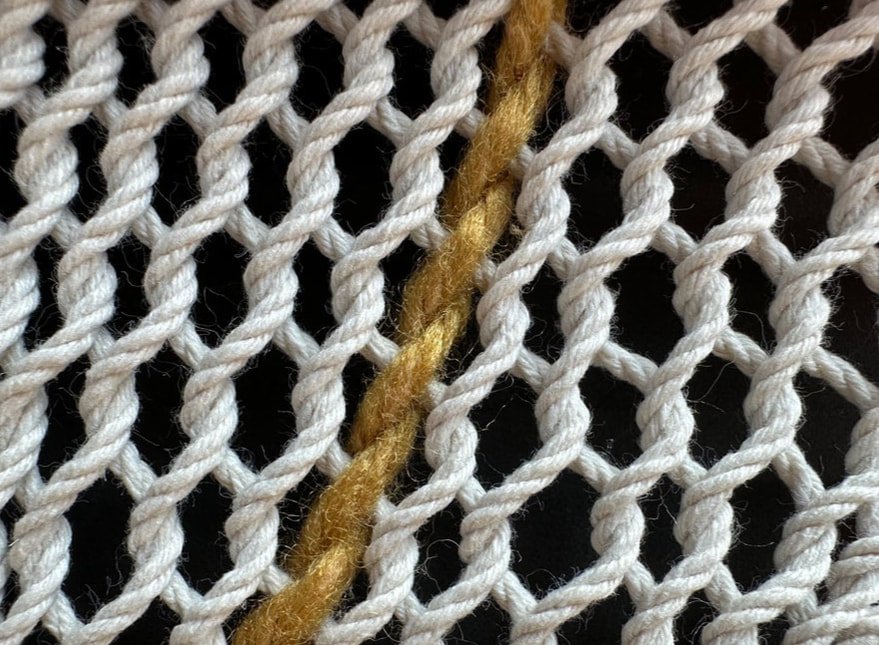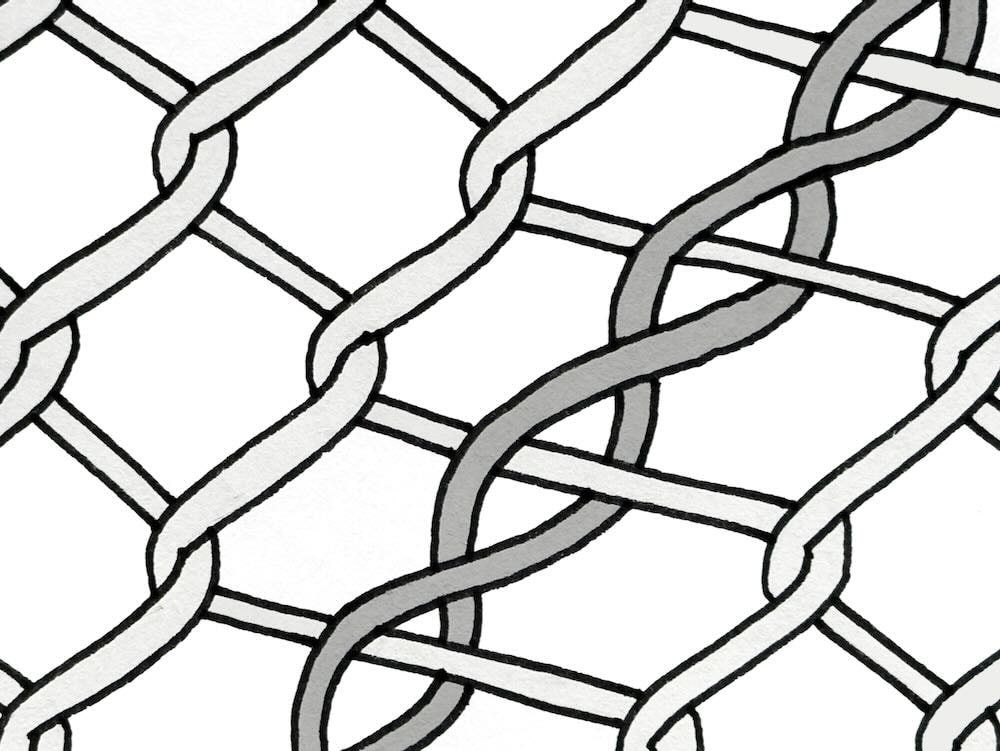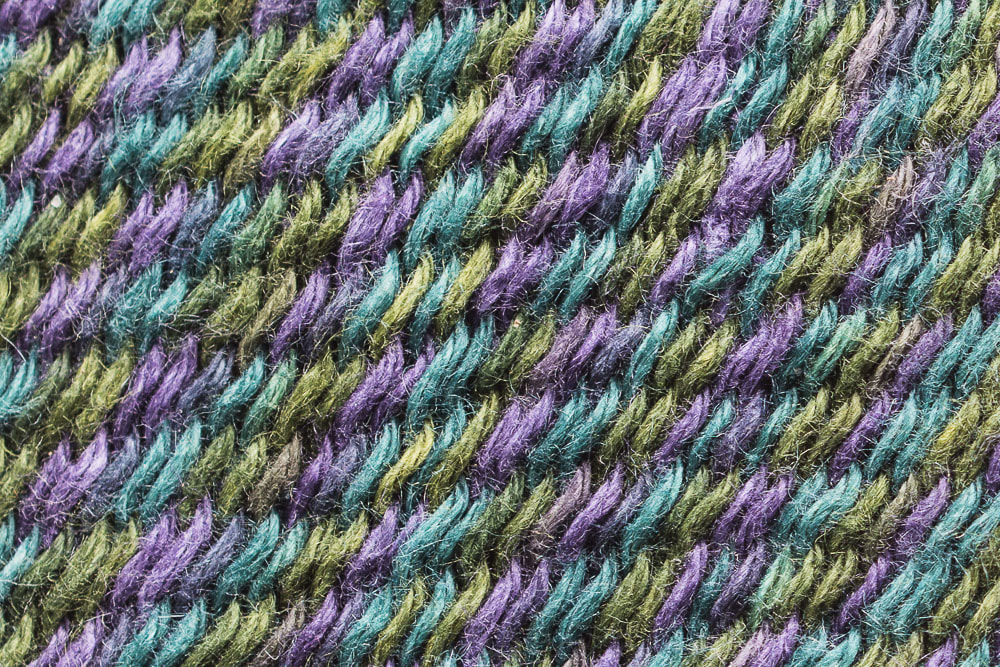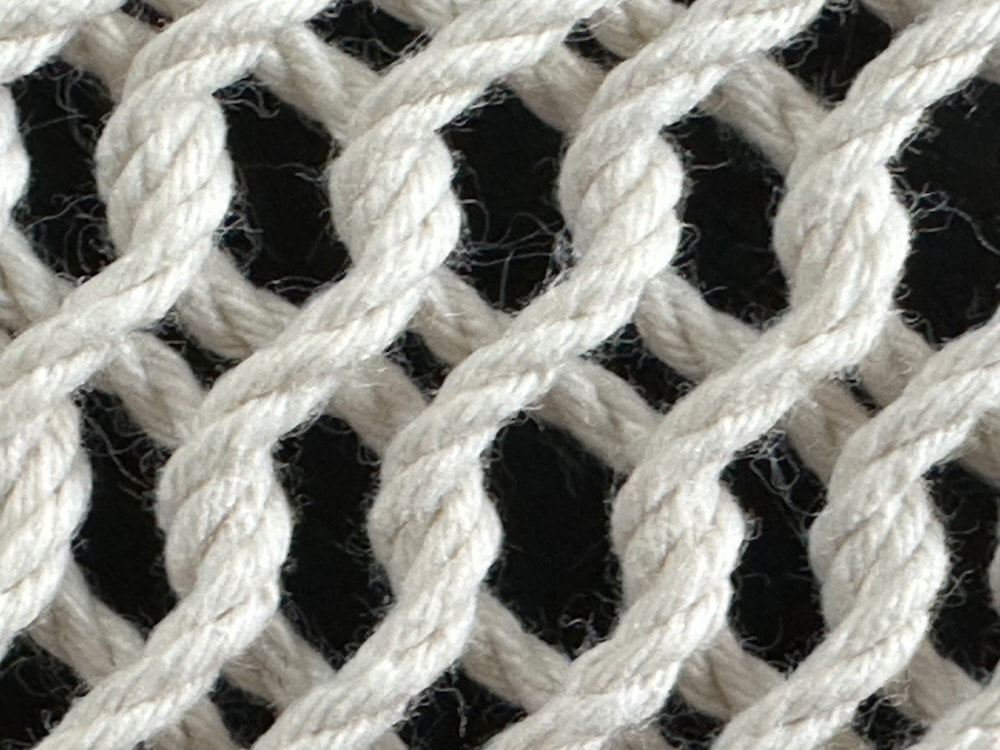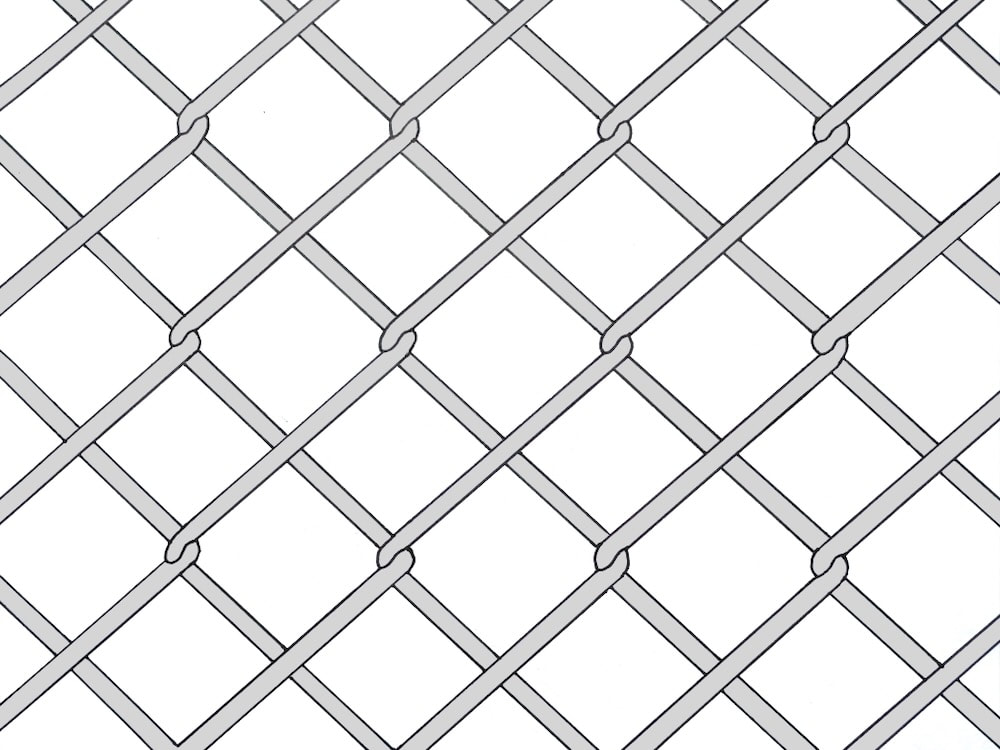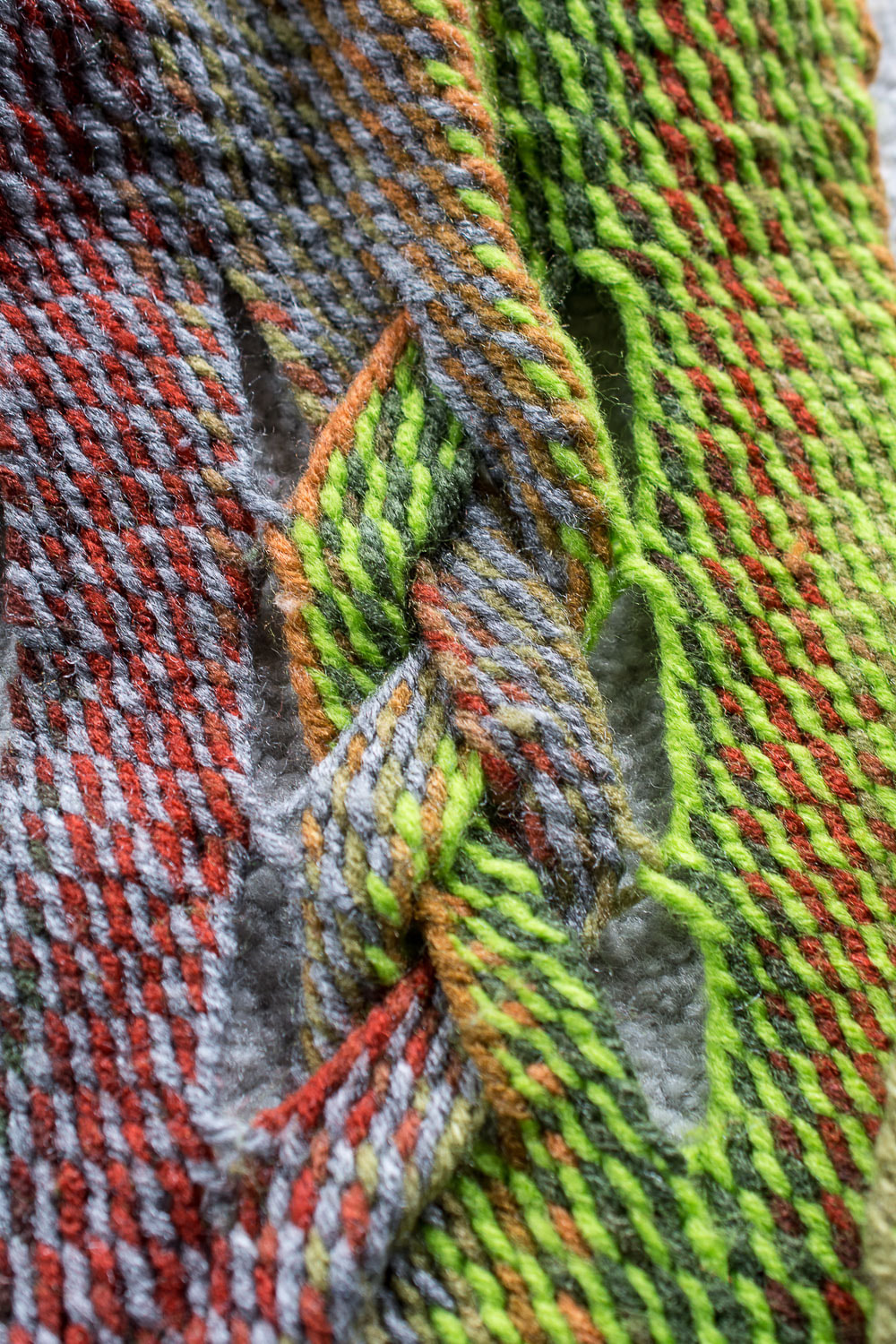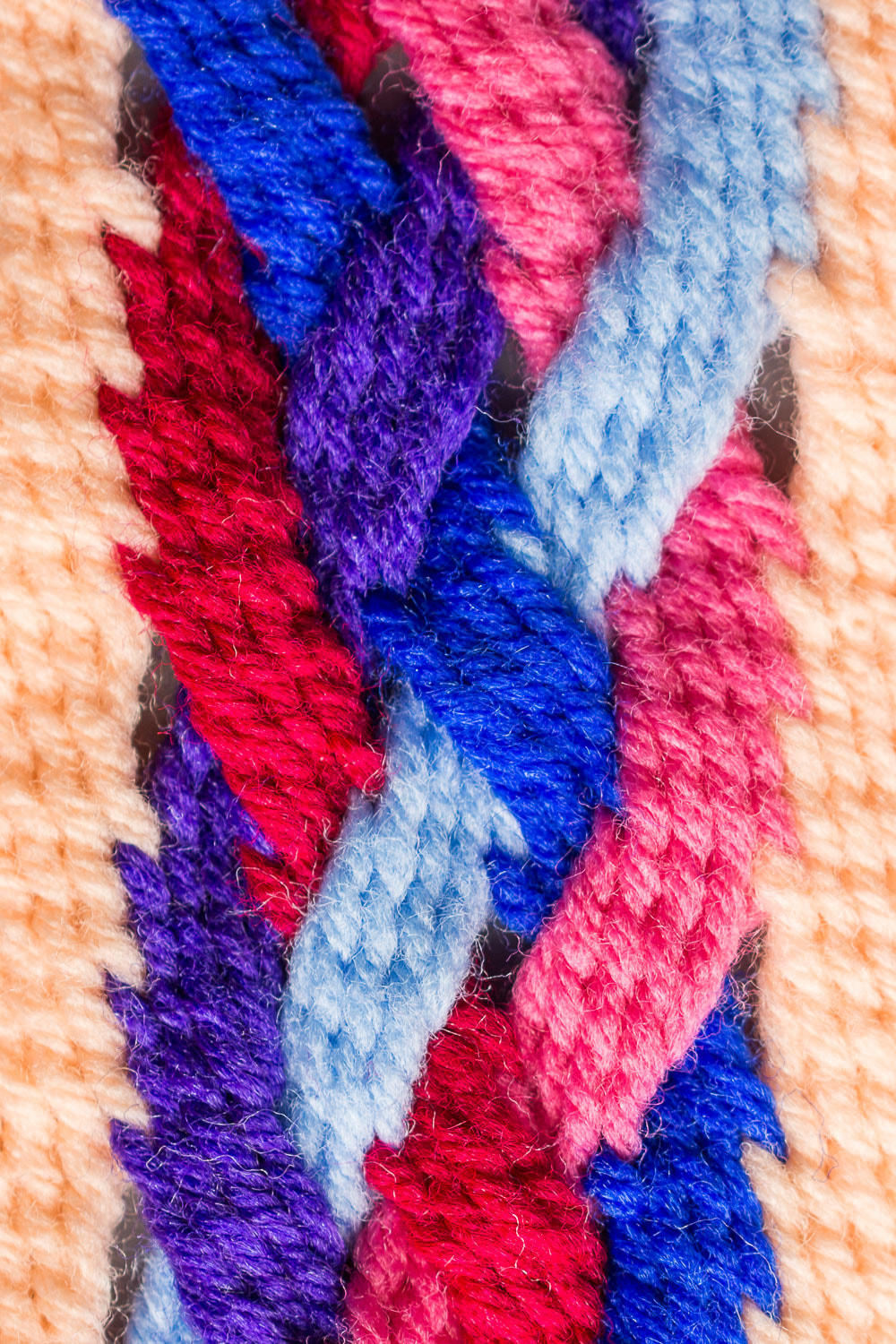Basic Interlinking
A chain-link-fence structure with considerable stretch, interlinking provides a cloth with which many different patterns can be created. At rest the rows lie next to each other, but when stretched small holes appear and the chain link structure become visible.
Stripes
Depending on the arrangement of the threads, stripes can be horizontal, vertical, or diagonal.
Full Twists
Full twists can move threads sideways and create bigger holes. Strategically placed full twists can move threads to create the different stripes illustrated above. Multiple full twists were used to make lace bonnets in Bronze Age Scandinavia.
See the Lace Gallery for more photos of lace created with extra twists.
Lace
Strategic placement of holes can produce a large variety of designs.
See the Lace Gallery for a more examples of sprang lace.
Surface Texture
Using S and Z leaning threads
Changing the direction of the "stitches" creates textured patterns that can be used for surface designs. When S and Z directions are switched in the middle of the row along diagonals, raised sections create textured designs. When S and Z directions are changed along horizontal or vertical lines the cloth remains flat and the texture changes create linear patterns.
When S and Z directions are changed along horizontal rows the fabric remains flat. When these changes are combined with alternating colors, they change the slant of diagonal stripes.
See the S&Z Gallery for photos of more S&Z patterns.
Twining
Contrasting threads can be twined on a background of interlinking to create a variety of patterns.
See the Twining Gallery for photos of twining motifs.
Under 3 Interlinking
This variation on interlinked sprang carries each thread under three threads, creating a thicker fabric that retains the elasticity of basic interlinking.
Transpositions
When the cloth is made in narrow widths it can be manipulated as tabs, similar to cables in knitting. My favorite is to create braids within the braided fabric.
See Transposition Gallery for more transpositions.

